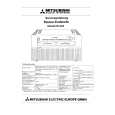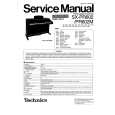|
|
|
Kategorie
|
|
Informacje
|
|
Polecamy
|
|
|
 |
|
|
Dla tego produktu nie napisano jeszcze recenzji!
 ;
jedyne do czego mogę mieć zastrzeżenie to jakość zdjęć zawartych w przesłanej instrukcji serwisowej ponieważ są fatalnej jakości, praktycznie nieczytelne. tak poza tym jestem zadowolony to jest to czego szukałem.
 ;
Wszystko w porządku.
Instrukcja czytelna i kompletna.
Dziękuję.
all right!
thank you.
 ;
Bardzo dobra instrukcja. Zawiera wszystko co potrzeba, polecam!
 ;
Instrukcja jest OK. Schematy czytelne, opisane niektóre procedury.
 ;
Instrukcja bardzo czytelna. zawiera co potrzeba. Polecam
NUDOS NiCd shavers
TECHNICAL DESCRIPTION
100-240 V 50/60Hz R1 L1 D4 C1 C2 D1 D2 D3 A 2 x AA NiCd C3 T1
2
The electronics for the Nudos shavers with NiCd cells consist of 2 modules: a Power Module (PM) and a Time Control Module (TCM), connected via a 5-pin connector.
1 2 3 4 5 6 7 8 9
18 17 16 15 14 13 12 11 10
R5
POWER MODULE
C4 C5
R7
R8 R12
R10 TS1 R14
IC1
TEA 1402
R9
The PM consists of a High Voltage Integrated Circuit (HVIC) and some external components, regulating the following functions: a. a current controller to adjust the charge current at 1200 mA or at 100 mA. b. a 2.5 V dynamic supply controller for shaving from the mains. c. a primary current limiter (max 400 mA) to protect the transformer from saturation. d. a frequency limiter (max 60 kHz). e. an open cell protection (Vbat>5V). f. a temperature protection (Tchip>140�C). The mains voltage is full-wave rectified by D4 and smoothed by �-filter C1-L1-C2. This filter also serves as a radio interference filter (RIF) for the SOPS and motor and as a suppressor of voltage transients from the mains. Resistor R1, which functions as a fuse, limits the switch-on (inrush) current and the transient (surge) current. The resistor interrupts in case of a too large mains current due to improper use or internal short circuit. The primary-current circuit consists of the primary winding of T1 and the high-voltage switch inside the HVIC (IC1). Snubber circuit D1-D2 limits the voltage across the primary winding during commutation. During the flyback of the converter (when the switch is open) the secondary winding of T1 will deliver the primary energy across D3 and R2 to the cells or to the R26 sensed motor.
C6
MP
1
2
3
4
5
MP
The TCM has 3 variants: HQ3865 with 4 green LEDs and 1 red/green duoLED. HQ4845 with 1 red LED and 1 green LED. HQ4865 with 4 green LEDs and 1 red/green duoLED. HQ4885 with LCD, 1 red LED and 1 green LED. When the PM is connected to the mains, a signal will be generated by the SOPS, which is recognised by the TCM as �mains on�. Depending on the frequency of this signal, the TCM forces the PM into the quick charge mode as long as the capacity counter has not reached the �full� state. After max. 30 minutes the PM is set to the slow charge mode. If during charging the shaver is switched on, the PM is set to the dynamic 2.5 V mode, in which the control switches from TCM to PM. With empty cells this means that no charging takes place till the cells reach the 2.5 V level, consequently the capacity counter is not activated. If the cell voltage is higher than 2.5 V, the motor current will come from the cells. The capacity counter will now count down, as signalled via R26. If the voltage drops below 2.5 V again, the PM takes over the supply of the motor current. During charging and discharging the IC calculates the capacity available in the cells and subsequently generates signals to activate the LEDs and/or LCD, the sequence being:
TIME CONTROL MODULE The primary function of the TCM is: Monitoring the capacity of the cells during charging and discharging. - controlling the 3 charging modes: 1. 1200 mA during max. 30 minutes. 2. 100 mA if the voltage across the 2 cells exceeds 2.5.V and charging exceeds 30 minutes. 3. 200-1800 mA at 2.5 V when the motor is switched on at the same time.
|
|
 |
> |
|































